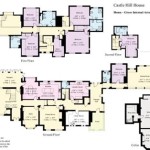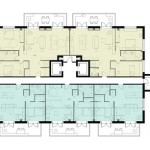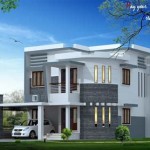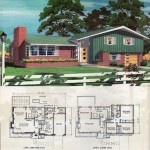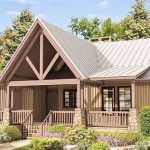House Plans Design: A Comprehensive Guide
House plan design represents a crucial initial step in the home-building process. A well-designed plan serves as a roadmap, detailing every aspect of the future home, from the layout and dimensions to the placement of doors, windows, and utilities. It provides a visual representation of the homeowner's vision, allowing for clear communication between the homeowner, architect, builder, and other stakeholders.
The design process typically begins with an initial consultation between the homeowner and a designer or architect. During this meeting, the homeowner's needs, preferences, lifestyle, and budget are discussed. Factors like the desired number of bedrooms and bathrooms, the need for specialized spaces such as a home office or a playroom, and preferred architectural styles are all taken into consideration. The site itself, including its size, topography, and orientation, also plays a significant role in shaping the design.
Following the initial consultation, preliminary sketches and conceptual designs are developed. These initial designs explore various layout options and spatial arrangements, allowing the homeowner to visualize different possibilities and provide feedback. As the design evolves, more detailed drawings are produced, including floor plans, elevations, and cross-sections. These drawings provide a comprehensive representation of the home's structure and layout, specifying dimensions, materials, and construction details.
Several key elements contribute to a successful house plan design. Functionality is paramount, ensuring that the layout effectively accommodates the homeowner's daily routines and lifestyle. Traffic flow should be seamless and intuitive, minimizing wasted space and maximizing usability. Aesthetics also play a crucial role, with the design reflecting the homeowner's preferred architectural style and creating a visually appealing and harmonious environment.
Sustainability is an increasingly important consideration in modern house plan design. Energy-efficient features such as proper insulation, high-performance windows, and solar panel integration can significantly reduce a home's environmental impact and long-term operating costs. Water conservation measures, like rainwater harvesting systems and low-flow fixtures, are also becoming increasingly popular.
Accessibility is another critical factor to consider, especially for individuals with mobility challenges or aging in place. Incorporating features like wider doorways, ramps, grab bars, and adaptable bathroom designs can ensure that the home remains comfortable and accessible for all occupants throughout their lives.
Budget considerations are integral to the design process. The architect or designer works closely with the homeowner to develop a plan that meets their functional and aesthetic goals while staying within the allocated budget. Material choices, construction methods, and the complexity of the design can all impact the overall cost of the project.
Technology plays a significant role in modern house plan design. Computer-aided design (CAD) software allows for precise and detailed drawings, enabling architects and designers to create accurate representations of the home. Building Information Modeling (BIM) software takes this a step further, creating a 3D model of the home that incorporates all relevant building information, including materials, specifications, and construction sequencing. These technological advancements enhance collaboration and communication among stakeholders, streamline the design process, and improve overall project efficiency.
Choosing the right architect or designer is a crucial step in the house plan design process. Homeowners should look for professionals with experience, a strong portfolio, and a clear understanding of their needs and preferences. Effective communication, a collaborative approach, and a commitment to quality are essential qualities to look for in a design professional.
Beyond the basic layout and structural elements, house plan designs also encompass detailed specifications for electrical systems, plumbing, heating, ventilation, and air conditioning (HVAC). These specifications ensure that the home is equipped with the necessary infrastructure to support the homeowner's comfort and safety.
Local building codes and regulations also play a significant role in the design process. Architects and designers must ensure that the plans comply with all applicable codes and regulations, ensuring the safety and structural integrity of the home. Obtaining necessary permits and approvals from local authorities is a crucial step in the building process.
In conclusion, house plan design is a multifaceted process that requires careful consideration of numerous factors. From functionality and aesthetics to sustainability and accessibility, each element contributes to the creation of a successful and well-designed home that meets the unique needs and preferences of the homeowner. By working closely with a qualified architect or designer and utilizing the latest technologies, homeowners can bring their vision to life and create a home that they will cherish for years to come.

Small House Design 2024001 Pinoy Eplans Floor Plans

House Plans How To Design Your Home Plan

Top 5 Modern House Plans With Photos Floor Archid

22 House Design With Floor Plans You Will Love Simple Two Story Affordable Designs Exterior

House Plans How To Design Your Home Plan

Small House Design Shd 2024007 Pinoy Eplans One Y Bungalow Plans Layout

30 40 House Plans X Elevation Design 2bhk

Small House Plans Popular Designs Layouts

Modern House Design Floor Plans And Designs

Home Plan House Designers In Bangalore Buildingplanner
Related Posts

